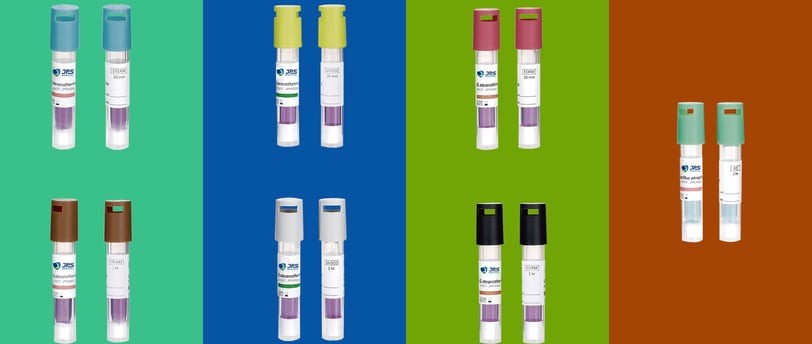Using Biological Indicators for Autoclave Validation: A Comprehensive Guide
Biological indicators (BIs) are essential tools used in the validation and monitoring of sterilization processes, especially in autoclaves. These indicators utilize specific microorganisms that are known to be highly resistant to the sterilization method being tested. The primary role of BIs is to provide an objective measure of the effectiveness of the sterilization cycle. By confirming that the autoclave has effectively eliminated these resistant microorganisms, healthcare facilities and laboratories can assure the sterility of their instruments and materials.
3/28/20254 min read


Understanding Biological Indicators
Biological indicators (BIs) are essential tools used in the validation and monitoring of sterilization processes, especially in autoclaves. These indicators utilize specific microorganisms that are known to be highly resistant to the sterilization method being tested. The primary role of BIs is to provide an objective measure of the effectiveness of the sterilization cycle. By confirming that the autoclave has effectively eliminated these resistant microorganisms, healthcare facilities and laboratories can assure the sterility of their instruments and materials.
Commonly used organisms in biological indicators include Bacillus stearothermophilus and Bacillus subtilis. Bacillus stearothermophilus, a spore-forming bacterium, is particularly valued for its resilience to high temperatures and moist conditions typical in steam sterilization. Its spores can withstand autoclave processes, making it an ideal benchmark organism for determining sterilization efficacy. Similarly, Bacillus subtilis is another spore-forming bacterium that serves as a control for sterilization processes. The presence of these microorganisms in biological indicators allows for the assessment of the autoclave’s performance.
The use of biological indicators is critical in upholding sterilization standards in healthcare settings and laboratories. Their implementation not only helps in routine quality control but also provides a layer of reassurance that surgical instruments and laboratory equipment are free from viable microorganisms. Regular testing with BIs ensures compliance with regulatory standards and best practices in infection control. It is through the diligent use of these indicators that healthcare professionals can maintain a safe environment, minimizing the risk of infections associated with surgical procedures or laboratory work.
Choosing the Right Biological Indicator for Your Autoclave
Selecting the appropriate biological indicator (BI) for autoclave validation is crucial for ensuring effective sterilization processes. BIs are vital components in monitoring the efficacy of sterilization, serving as a quality control measure that can verify whether the sterilization conditions have been met. When choosing a BI, several key criteria must be considered, particularly focusing on the type of autoclave and the materials being sterilized.
Firstly, it is important to assess the sterilization cycle parameters, which include temperature, pressure, and exposure time. Different autoclaves operate at varying settings, hence the BI selected must correlate with these variables to provide accurate results. For instance, if an autoclave operates at a higher temperature, a thermophilic organism like Geobacillus stearothermophilus may be more suitable, while other organisms may be used for lower-temperature applications.
Additionally, the specific needs of different industries must not be overlooked. In a healthcare setting, the chosen BI should comply with stringent healthcare regulations and standards such as the FDA, ISO, and AAMI guidelines. These regulations dictate the performance specifications for BIs, making it imperative to utilize indicators that meet industry standards. In contrast, research labs may opt for BIs that cater to specific substances or organisms pertinent to their studies.
Moreover, the type of materials being sterilized should also influence the choice of BIs. Certain biological indicators are more effective with specific materials, whether they are metal instruments, plastics, or textiles. The compatibility of the BI with the sterilization load can significantly impact the validation results. Hence, it is vital to thoroughly evaluate all these factors when selecting the appropriate biological indicator to ensure comprehensive autoclave validation.
Proper Testing Procedures Using Biological Indicators
Biological indicators (BIs) play a crucial role in validating the efficacy of autoclaves in sterilization processes. To ensure accurate and reliable outcomes, adhering to proper testing procedures is essential. The preparation and placement of biological indicators must be executed with precision. Initially, select appropriate BIs that are specific to the sterilization method being employed. For steam sterilization, use spore strips or vials containing Geobacillus stearothermophilus, whereas Bacillus atrophaeus is suited for dry heat sterilization.
The next step involves preparing the biological indicators. For spore strips, remove them from storage and allow them to reach room temperature before use. Ensure all items intended for sterilization have been adequately cleaned and loaded into the autoclave. It is recommended to place the biological indicator in the most challenging location for sterilization, typically at the center of the load or in a pouch, to better assess the machine’s effectiveness.
Once the loading is complete, initiate the autoclave cycle as per the manufacturer's guidelines. Post-sterilization, the biological indicators need to be properly interpreted. Following the completion of the cycle, incubate the BIs in a suitable growth medium at the specified temperature, usually 55-60°C for steam sterilization indicators. The incubation period generally lasts from 24 to 48 hours. A color change or growth indicates a failure in the sterilization process.
Routine checks are vital for continuous validation. Establish a testing schedule that aligns with the frequency of autoclave usage. It is prudent to conduct testing at least once a week or after any maintenance activity. Effective documentation of results is critical, as this serves as a reference for ensuring ongoing compliance with sterilization protocols. In case of unexpected results, troubleshoot by checking the autoclave settings, validating biological indicator integrity, and ensuring proper placement and conditions. By following these guidelines, facilities can ensure the reliability of their sterilization processes and uphold patient safety standards.
Interpreting Results and Ensuring Compliance
Understanding the results from biological indicator tests is crucial in the process of validating autoclaves. A biological indicator typically contains spores of microorganisms that are highly resistant to the sterilization process. After subjected to an autoclave cycle, these spores are evaluated to determine if sterilization was effective. A 'pass' result indicates that the autoclave has successfully eliminated all viable pathogens, affirming that the sterilization cycle met the required parameters. Conversely, a 'fail' result points to a potential sterilization failure, suggesting that some spores have survived, which may compromise the safety and efficacy of the sterilized items.
Failing a biological indicator test signifies an urgent need for remediation. The first step should be to thoroughly document the failure, noting the date, time, and conditions of the sterilization cycle. This record serves as a critical component of quality assurance, ensuring that trends can be monitored and that all processes are in line with established health and safety regulations. Subsequently, the autoclave should be thoroughly inspected to identify the cause of the failure, which may include mechanical malfunctions or improper loading of materials.
In cases where a biological indicator yields a 'fail' result, corrective actions must be taken promptly. This may involve revalidating the autoclave by running a test cycle with a new biological indicator, followed by a close examination of the results. Depending on the situation, it may also be necessary to review training protocols for staff who operate the autoclave, ensuring that they are adequately informed about best practices for sterilization. Health and safety compliance hinges greatly on the reliable interpretation of biological indicator test results, and a systematic approach to documentation and corrective measures is essential for maintaining high sterilization standards.
BIOLOGICAL INDICATOR
Best Biological Indicator for Sterilization Process in the sterilization process
Contact us
Newsletter
© 2025. All rights reserved.
